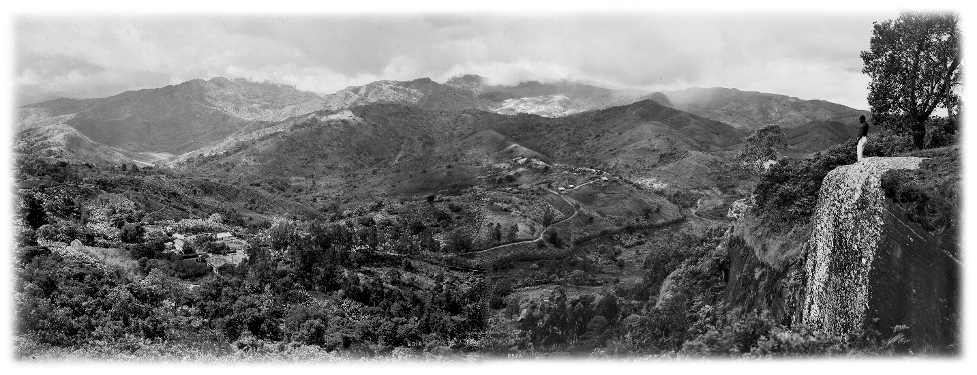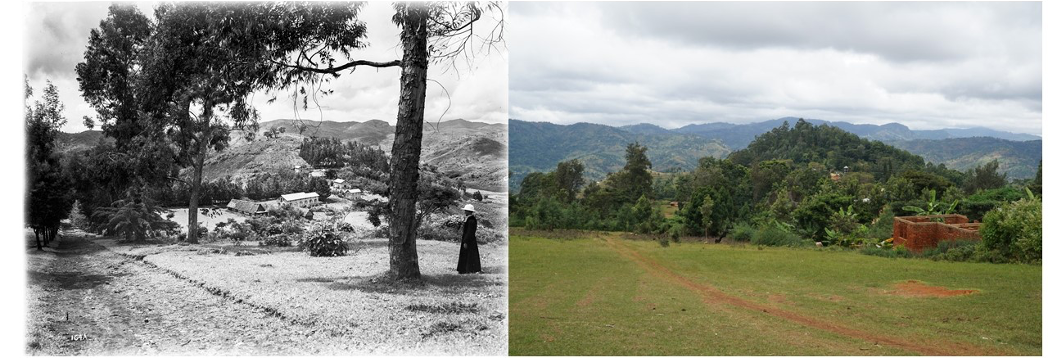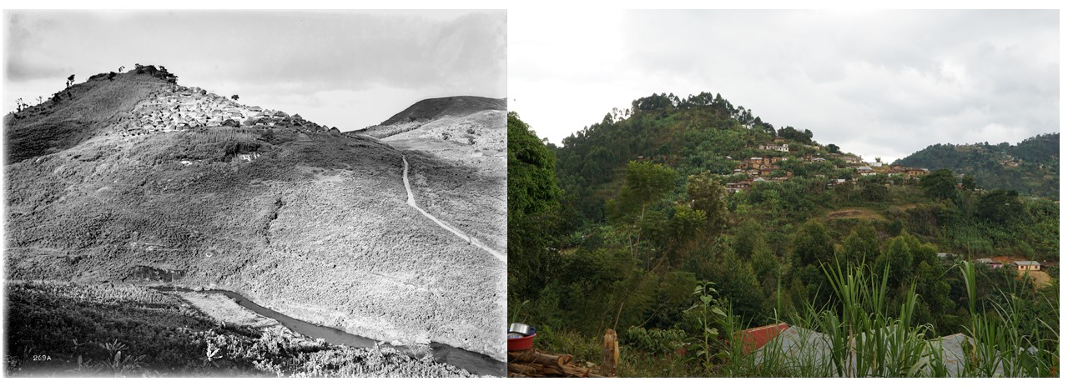USU History Professor Explores Environmental History in Tanzania
Author: Preston Waddoups, USU Libraries

Panorama created with Dobbertin’s photographs of Bumbuli from the 1910s. Images provided by the German Federal Archives
For years, Utah State University history professor Chris Conte has studied the landscapes and communities of the Usambara mountains in Tanzania, paying close attention to environmental change in the last century and the effects of colonialism. And since 2015, when Conte first saw the early twentieth-century photographs of the Usambara Mountains taken by German photographer Walther Dobbertin, he has been working on an ambitious and international public history project called the Usambara Knowledge Project.
Shortly after seeing Dobbertin’s photographs, Conte traveled to Tanzania to locate Dobbertin’s picture sites and rephotograph them. By recreating Dobbertin’s photographs, Conte clearly reveals the environmental and human changes that have occurred in the past 100 years. While taking the photographs, Conte also began interviewing residents of the mountain communities pictured in Dobbertin’s photographs to understand local perspectives on landscape change that contain information missing from earlier colonial and later academic sources on the region.

The Trappist monastery at Gare, Tanzania, in the 1910s, and a 2016 photograph of the same site. Images provided by the German Federal Archives and Chris Conte.
Conte’s research, a product of both archival studies and field work, is featured in conjunction with both his modern photos of the Usambara mountains and Dobbertin’s original photos in a new digital exhibit hosted by USU Libraries and constructed by the Digital Initiatives Unit. And thanks to USU Libraries Graphic Designer Shay Larsen, several of Dobbertin’s landscape photographs have been digitally stitched together to create detailed and breathtaking panoramas of the mountains and settlements of Bumbuli and the Mlalo Basin.
But while these panoramas and many of the exhibit’s other photographs are certainly beautiful, they also serve a more important purpose. As Dr. Chris Conte writes in the exhibit’s introduction, these historical and modern photographs “argue for Africans carrying out an ecological restoration project using time tested techniques that conserved soil and relied on a diverse set of exotic and indigenous plants.”

The Mlalo Kaya, pictured in the 1910s and 2016. Images provided by the German Federal Archives and Chris Conte.
The digital exhibit represents an important development point in the Usambara Knowledge Project, a long-term collaborative digital humanities project on landscape change in the Usambara Mountains. Its contributors come from the both the United States and Tanzania, and include the Mlalo Elders’ Council, the Usambara Elders’ Council, the Utah State University Libraries’ Digital Initiatives Unit and Special Collections & Archives Department, Kivatiro Hamza Kitojo, Sufian Shekoloa, and Dr. Chris Conte.
As a testament to the project’s international character, the exhibit has been published in both Kiswahili (Swahili) and English editions. Links between the twin exhibits allow readers from the United States and Tanzania to easily switch to their preferred language. Additionally, a traveling physical version of the exhibit has been created by the library and will be displayed in various local communities.
Dr. Conte is currently back in the Usambara Mountains on his tenth tour conducting further research for the Usambara Knowledge Project. Upon his return to USU, transcriptions and translations of newly-collected oral histories from residents of Usambara mountain communities will be added to the digital exhibit.

